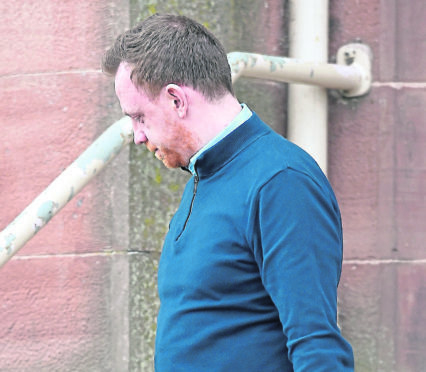A Glasgow businessman accused of cheating pensioners out of thousands of pounds for renewable heating systems which were never supplied walked free from the dock yesterday.
For the past two weeks, 38-year-old Stephen Hughes of Haylynn Street, has been on trial at Inverness Sheriff Court, facing 63 charges of dishonesty and Trading Standards offences.
But after two days of legal argument, Sheriff Margaret Neilson ruled that only five charges of failing to inform customers of their cancellation rights should be put to the jury.
However, fiscal depute Roderick Urquhart told the court he was withdrawing those charges as they would never be put to a jury if they stood alone.
During the trial, Mr Urquhart dropped and amended some of the charges in a bid to rescue the prosecution. He also conceded that some of the charges had “not been happily drafted.”
At the end of the evidence, he then tried to amend more of the charges but Sheriff Neilson rejected his motion, saying it was too late and could be prejudicial to Hughes.
Defence counsel Paul Nelson had by then put a complex “no case to answer” argument to the Sheriff, saying there was insufficient evidence against his client.
>> Keep up to date with the latest news with The P&J newsletter
He told the Sheriff there was nothing in the Crown case which proved that there was criminal intent, that Hughes knew the systems would not be installed or that he did not intend to supply them.
Mr Nelson successfully argued that there was no evidence of the non-availability of Government grants or that they were contingent upon the payment of deposits.
Witnesses told the trial that around £30,000 of deposits had been paid by them but no goods received.
They also accused Hughes of misleading them about the availability of Government grants, which turned out to be loans.
Sheriff Neilson explained to the jury that it had ended because of complex legal issues and made no criticism of the “credibility and reliability of the witnesses”.
Mr Urquhart told the court: “The common law charges had not been happily drafted and I belatedly tried to amend them to what they probably should have said.”
He apologised to the jury and the witnesses for the amount of time they had devoted to the trial and that their expectations had not been met.
A Crown Office spokesman said: “As with any case, the decision to prosecute was taken after full and careful consideration of all the facts and circumstances and the evidence available at that time.
“After a no case to answer submission was upheld in relation to the majority of the charges against the accused, the Crown reviewed the remaining charges and decided to discontinue proceedings”.
